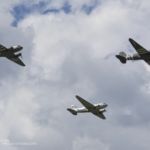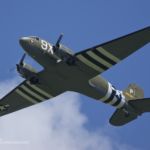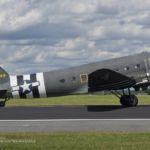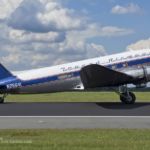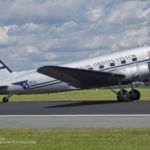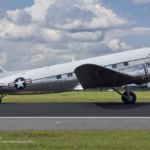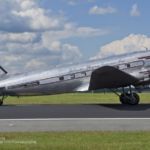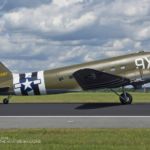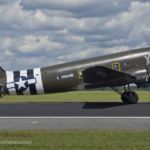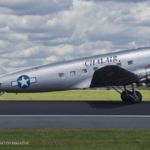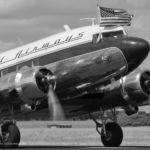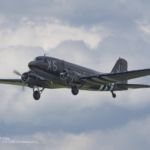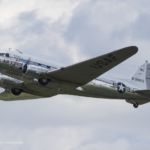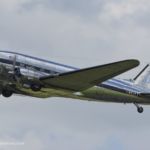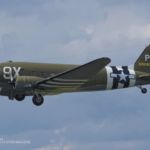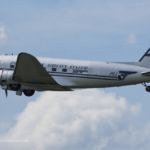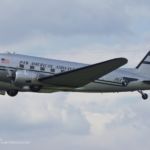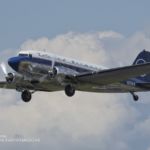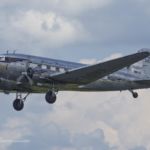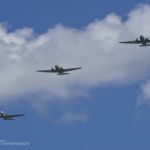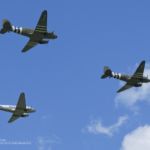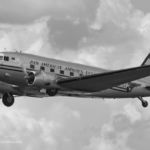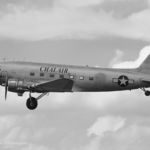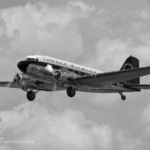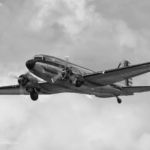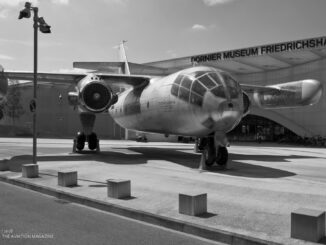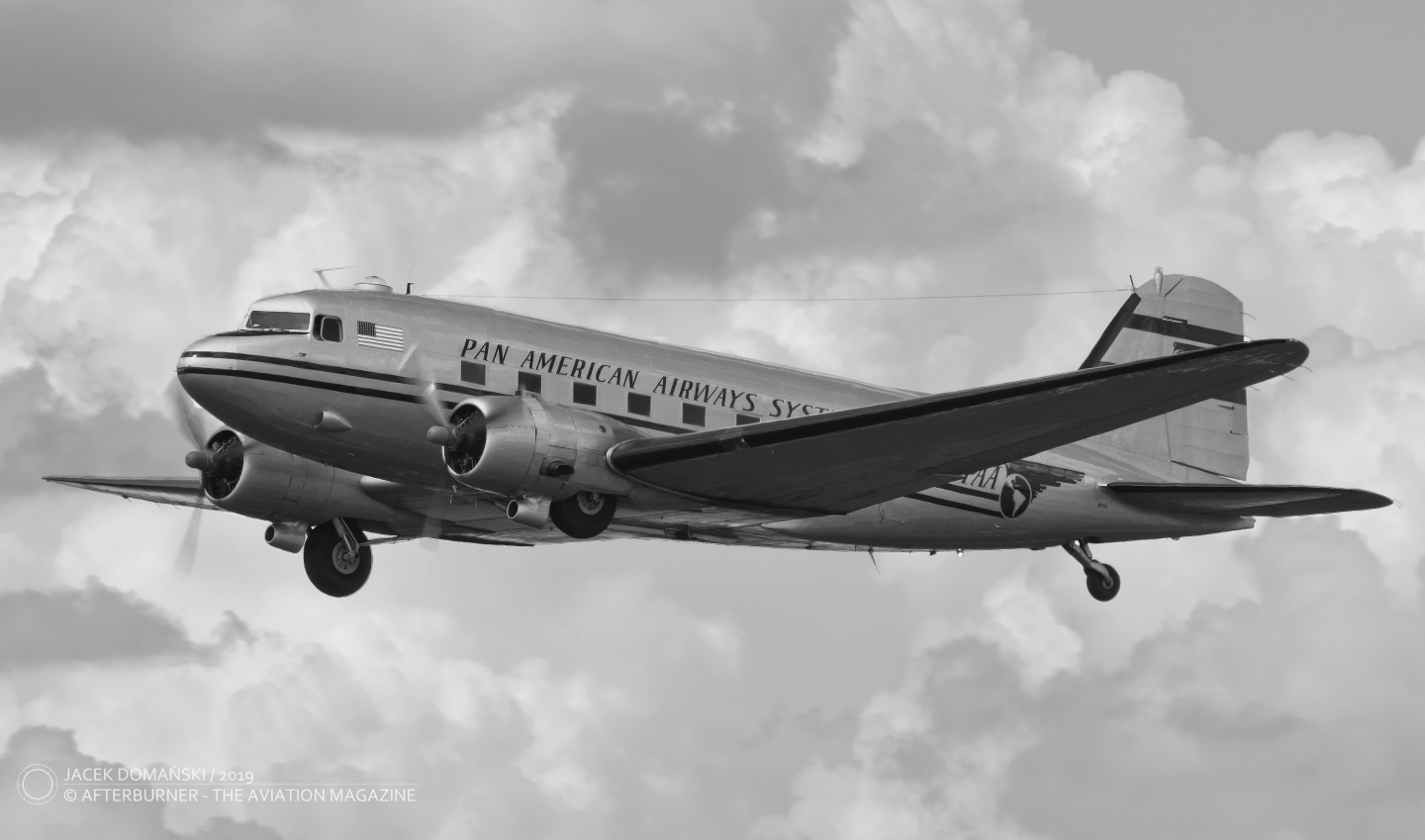
On 26th June 1948, thirty-two C-47 transport aircraft took-off from the airfields located in the Allied occupation zones of Germany and headed for Berlin. Carrying 80 tonnes of cargo, including milk, flour and medicines, those aeroplanes started one of the most unique operations in the aviation history – the Berlin airlift.
It was, with no doubts, the most spectacular and largest humanitarian action, performed solely by the air force. Furthermore, not only the unique one, but also largely improvised, done as the quick response for the Berlin blockade, set up by the Soviet Union as the result of the currency crisis. The airlift operation, initially estimated to last only three weeks, was the only source of all the necessary supplies for over two million inhabitants of the western zones of Berlin for the long 323 days.
This year, at the 70th anniversary of the end of the Berlin airlift, the Förderverein Luftbrücke Berlin 70 e.V. (Berlin Airlift Foundation) organized the series of spectacular events, recalling the operation that saved the Berliners from starvation. The headline of this commemoration was to re-create the airlift, with the participation of the historic aircraft originally used in that logistically amazing operation 70 years ago.
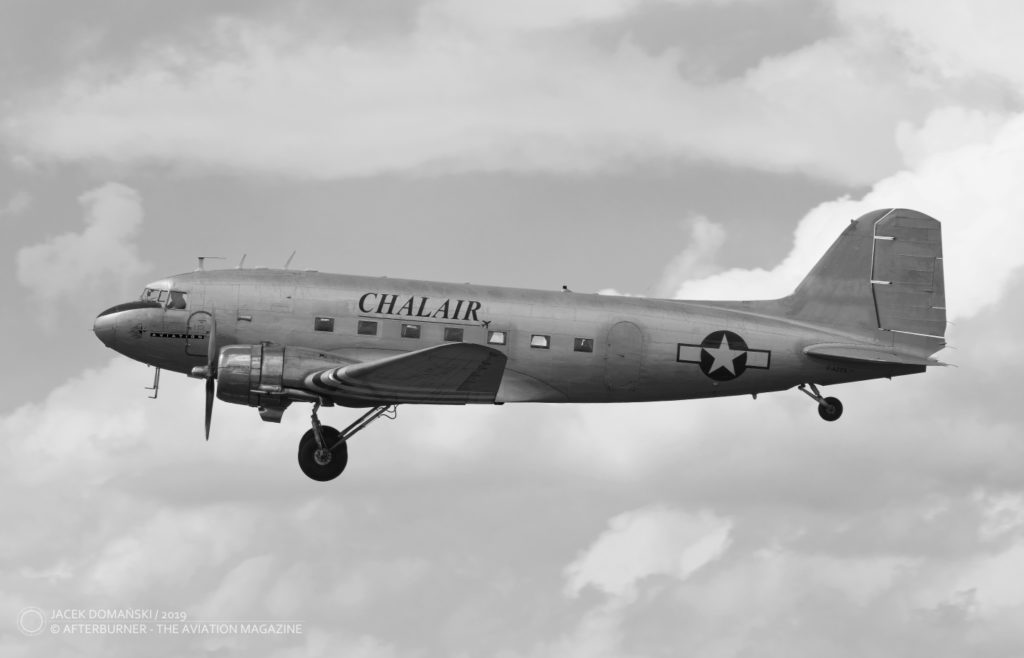
This idea was, fortunately, supported by another important anniversary – 75 years from the D-Day Invasion. At this opportunity, ´Daks over Normandy´ event was planned to be held between 2nd and 9th June in both Duxford (UK) and Caen (F). That unique action, organized in commemoration of 160,000 Allied troops that landed in Normandy, including 24,000 parachuted or landed in gliders, plus the air force crews who brought them there. From over 800 transport aircraft used in the D-Day operation, most of them were Douglas C-47 Skytrains, and the unique gathering of ´Dakotas´ in a re-enacting event was planned. Around twenty C-47/DC-3 aeroplanes from all over the world – including the American formation called ´D-Day Squadron´ that arrived to Europe through the North Atlantic Route – came to Duxford and then flew to Caen for, the most probably, last commemoration of the D-Day aviation operation of such scale.
The D-Day anniversary action was over on 9th June, and then new assignment for the C-47s fleet began – ´The Return of the Rosinenbomber´ series of events. Under this programme the ´Dakotas´ visited a few military airfields in Germany, involved in the airlift operation 70 years ago: Wiesbaden Air Base (one of the main airlift hubs in 1948/1949 and still an USAF air base), Fliegerhorst Faßberg (at the time a RAF air base, supplying coal to Berlin) and Fliegerhorst Schleswig/Jagel (then known as RAF Schleswigland). The final conclusion of this memorial action was planned to be organized in Berlin, including the flypast over the town, dropping candy load as 70 years ago and land at one of the Berlin airfields.
The events in Wiesbaden, Faßberg and Jagel were more than successful, enthusiastically received by the general public, aviation fans and the authorities. In Faßberg and Jagel, now both being the air bases operated by the Luftwaffe, the ´Return of the Rosinenbomber´ was linked with the annual Luftwaffe open doors event, Tag der Bundeswehr and the related spotter days.
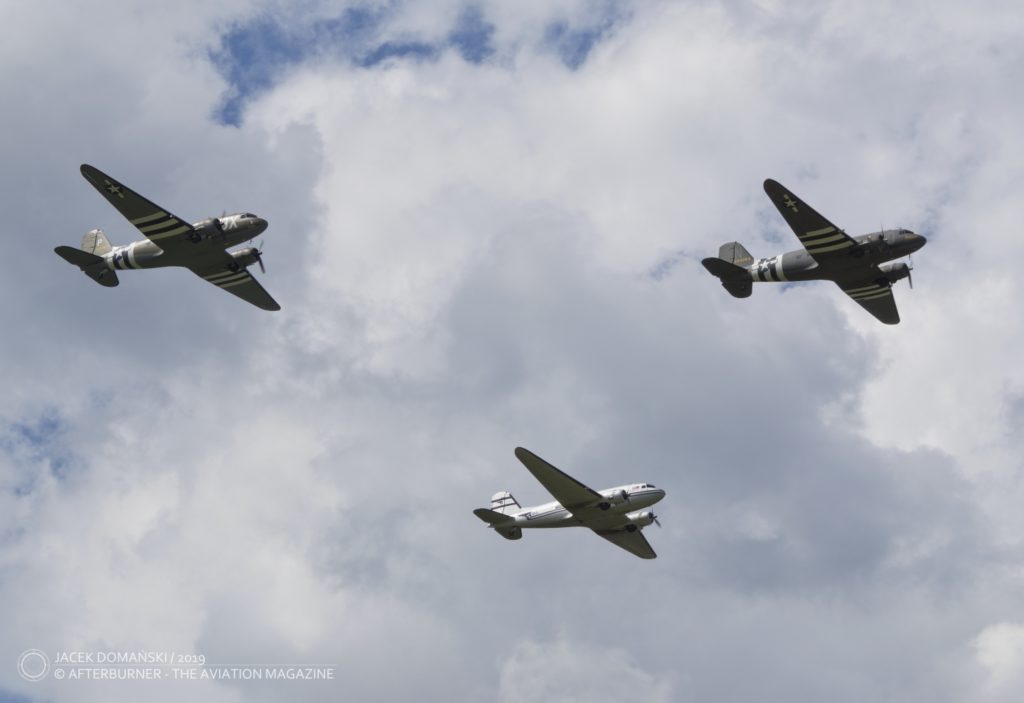
The open day in Wiesbaden was organized on 10th June, and the military commemoration event, closed for the general public, followed on 11th June. Both days were unique in every way – the air base was visited by 98-year-old Colonel Halvorsen and some of those Berlin children, now well into their 70s.
The next day, on Wednesday 12th the flight to Faßberg was planned, but severe weather conditions in Germany that day, forced the organizers to change their plans several times. Finally, the flight had to be postponed until the next day.
On 13th June the ´Dakotas´ took-off and headed North – hundreds of aviation enthusiasts were already waiting them at Jagel and Faßberg, where both airbases organized the spotter day on Thursday, with the C-47/DC-3 visit as one of the highlights of the day. Indeed, the ´Dakota´ fleet created and unforgettable moment at both airfields, by not only offering the unique view of those historical aircraft flying in formation, but then the formation landed and slowly was taxiing in front of the spotters´ line, creating the perfect photo opportunity.
Friday, 14th June, was the day with several side acts were planned in Faßberg and on following day the main event of the Tag der Bundeswehr open day took place at the air base there. According to the official Bundeswehr release, the open doors event in Faßberg attracted more than 60,000 visitors, including Ursula von der Leyen, the German Minister of Defence.
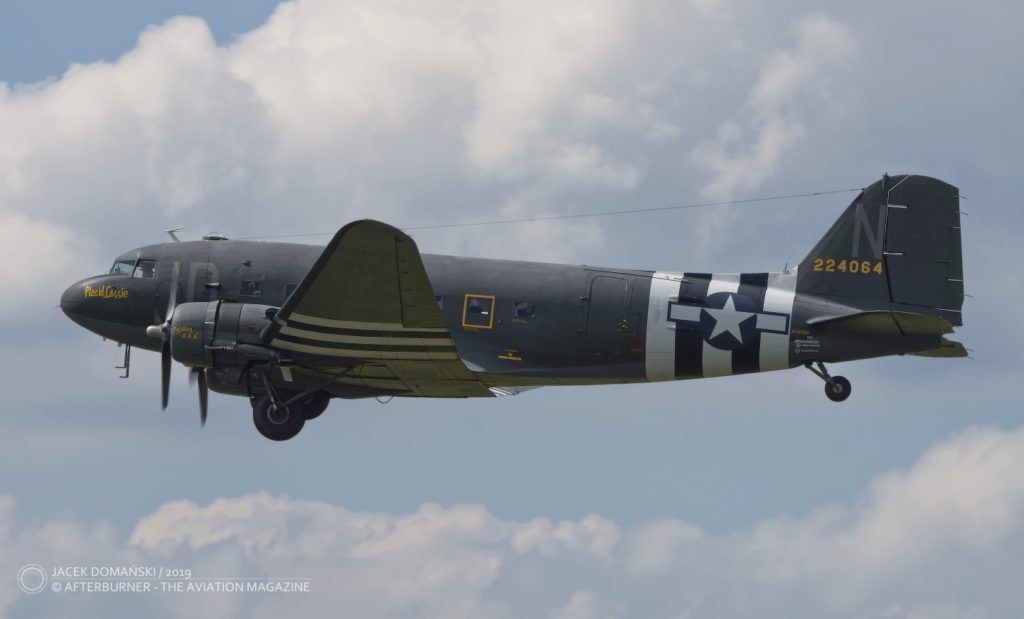
Unfortunately, the final point of the 70th Berlin airlift anniversary programme did not go so great and perfect, as initially planned. The ´Rosinenbomber´, admittedly, visited the German capital but there was no landing there, the flypast included mostly the uptown area and there was no candy drop. When telling about the event, most of the German press used the words like ´public disgrace´, ´shame´ or ´embarrassment´, the same or even more expressive statements flooded the social media.
What was the reason that triggered such emotional reactions?
The initial information, released by the Berlin Airlift Foundation, announced the flypast over the central zone of the capital, including flying over the Brandenburg Gate, the candy drop and landing at one of the Berlin airports, preferably Tempelhof – one of the main Berlin airfields at the time of the airlift, then located in the American sector (currently not in use and turned into the city leisure zone). The plan ambitious enough to be a perfect celebration of the airlift anniversary, showing the attitude the Foundation called ´The Airlift Spirit´, proving that the Cold War era was gone, and the unity won over the division.
Regrettably, there is still, more than two weeks after the event, no clear statement from the Berlin authorities or the organizer, why this remarkable plan failed. The only available information circling the Internet are the mix of the curt official releases, independent press investigations and, certainly, the rumours spread on the social media.
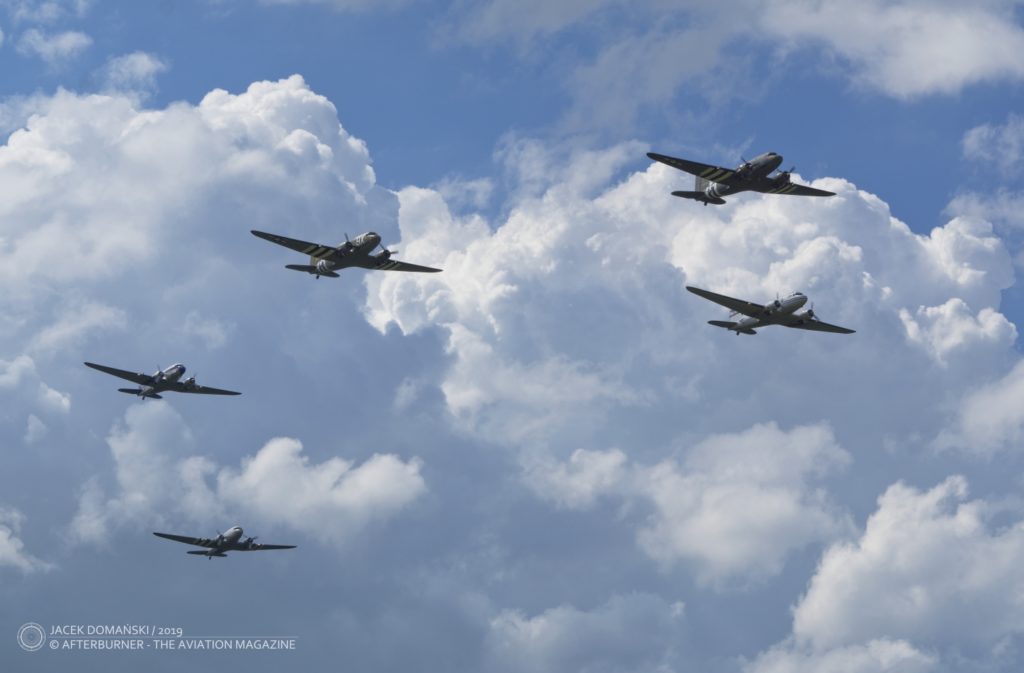
As previously mentioned, Tempelhof aviation activity was ceased in 2008 and the airfield – after a several years of uncertainty and constantly changing plans – was turned into the city park, following the so-called ´Tempelhof Act´ (Gesetz zum Erhalt des Tempelhofer Feldes) from 2014. The provisions included in the Act say that within the area of the former airport one can freely move, unaffected by the motor-powered means of transport, and additionally the area must be permanently, in its entirety, and unrestrictedly available for leisure and recreation, free of charge.
And exactly those two articles were often quoted in media, as the official reason and the explanation the request for landing at Tempelhof was rejected. It seemed, for the press using such argument, clear that the ´Dakotas´ are the motor-powered mean of transport, the landing/take off requires part of the former airfield to be closed for security reasons and, most probably, the Foundation would like to sell tickets for entering the area and see the aircraft were.
At first glance, this seems reasonable but since the Tempelhof airport was closed, there already were several events organized in the area and it looks there were no problems with making an exception from those rules, when necessary. What is more, the part of the airport area was even turned into the refugee camp.
According to the airlift/flypast organizers, the consent from the current Tempelhof operator was already granted but then issuing of the final permission stuck in the Senate of Berlin. However, the authorities claim, the problem was on the side of the Foundation because the necessary documents were not submitted on time, even if the deadline was postponed.
The next step was the flypast over the Brandenburg Gate and the city centre, and due to the fact that the area within a radius of three nautical miles (5,56 kilometre) from Reichstag is a special zone – excluded from the land of Berlin – it required the permission issued by the federal authorities. The request was sent to Federal Supervisory Authority for Air Navigation Services (Bundesaufsichtsamt für Flugsicherung – BAF) that coordinated it with other German authorities. In the conclusion the permission was not granted, because one of the rules could not be observed. Regrettably, it was not disclosed which one.
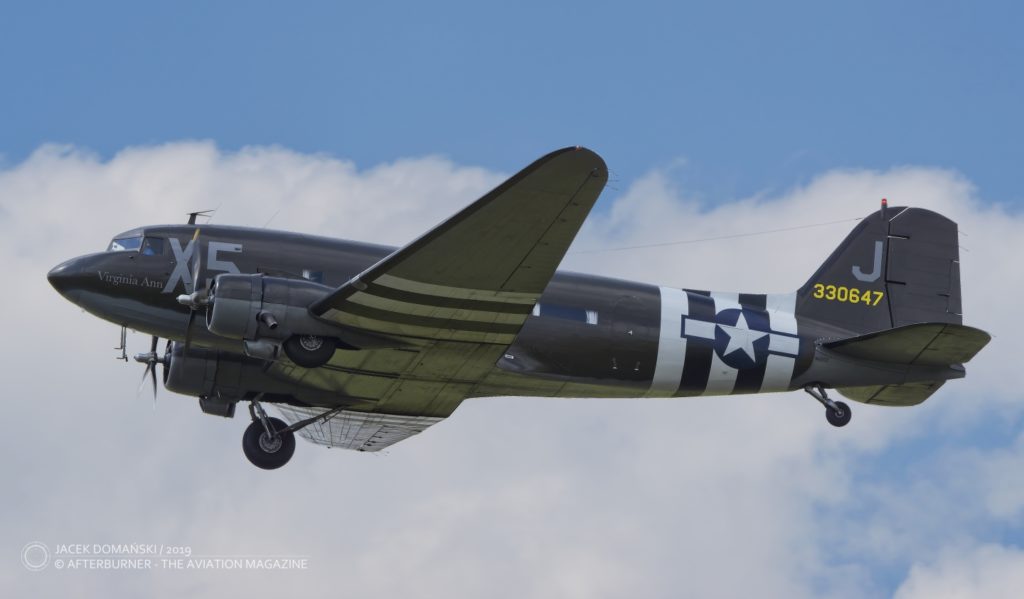
And those two facts, as a consequence, already closed the possibility to organize the flypast and landing in Berlin, as previously planned. Certainly, Tempelhof is not the only airfield in Berlin, but from the obvious reasons landing at Tegel or Schönefeld was impossible – those airports operate the regular flights, currently are at their capacity limits and merely cannot cease the scheduled flights for a few hours. The fourth Berlin airfield, the former RAF air base in Gatow was closed in 1995 and the runways turned into the housing area.
Finally, the formation of C-47/DC-3 visited Berlin on Sunday, 16th June. The ´Rosinenbomber´ circled the city, flying over the uptown districts and made the flypast over Tempelhof and Schönefeld. Then the aeroplanes headed Erfurt, which was planned as the re-fuelling stopover. No landing, no candy dropping this time.
However, despite this sad conclusion, many Berliners were waiting the ´Dakotas´, especially at Tempelhof airfield. Unlike the Berlin authorities, they were really happy to see the Allied cargo aircraft over the city again. And upset that the politics and authorities had no will to make the commemorating flight even more unique.
The discussion related to the flypast and shifting the responsibility between the authorities is still ongoing until today. Regrettably, without the clear conclusion. The rumours are – certainly, not officially confirmed, but needed to be mentioned from the reporting point of view – the reasons why the permission was not granted could be political in nature. The Senate of Berlin is led by the coalition of the socialists and the greens, who had no interest in such commemorative event – the arguments related to the pollution and noise made by the formation of vintage aircraft could be heard. Additionally, the Senate of Berlin already organized its own anniversary event at Tempelhof, on 12th May, where the C-54 Skymaster was exhibited (certainly, as the static display only).
In conclusion, this situation merely looks like the illustrative stalemate created by the regulations and bureaucracy. The authorities wanted to follow the rules to the last point, but no one thought that the vintage aircraft could not strictly observe the modern rules. There wasn´t anybody there with the common sense, ready to make the decision and take the responsibility. The clear lack of the political will was the additional factor, and finding the excuses merely seemed safer in such situation.
It is a real pity, the Berlin part of the airlift anniversary created the disgust and the political issues, instead of uniting all people to celebrate the day in the spirit of the airlift. Primarily because it looks like this was the only action of its kind ever – there is just a weak chance to repeat it at any other round airlift or D-Day anniversary. And especially that the ´Daks over Normandy´, the related event mentioned earlier, turned out to be an organization disaster – at least according to the feedback it received in the social media.
Fortunately, the other airlift-commemorating events, organized in the military bases in the former West Germany, proven to be a great success. Tens of thousands of people from the general public and hundreds of aviation enthusiasts came there to see those amazing aeroplanes and celebrate the anniversary. Wiesbaden reported more than 33,000 tickets sold, Faßberg – as mentioned earlier – exceeded 60,000 visitors.
And the candy load, initially planned for Berlin, was dropped over Wiesbaden instead.
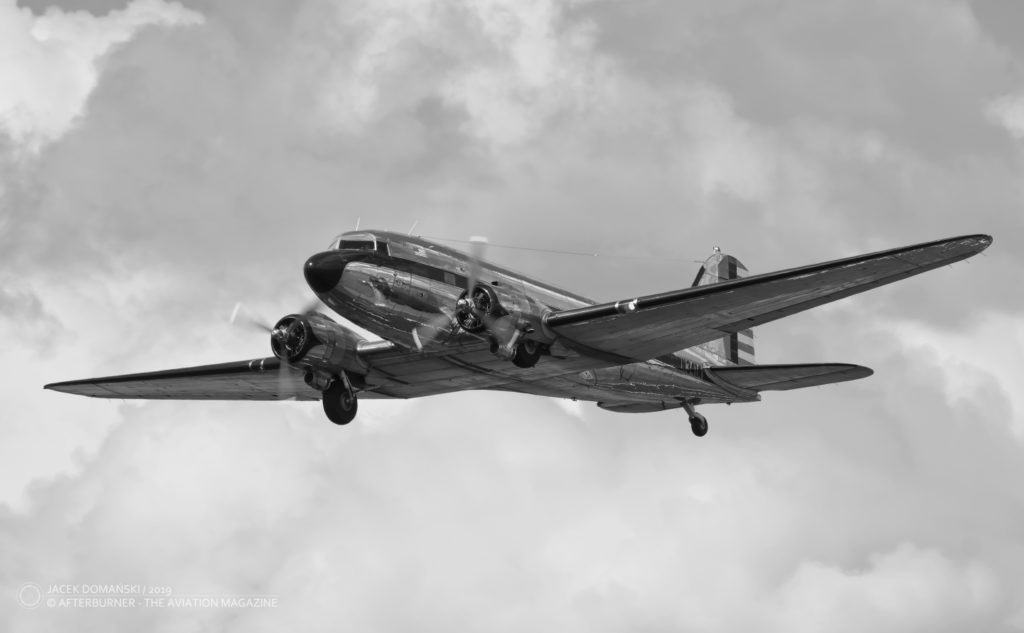
Rosinenbomber and the Berlin Airlift
Rosinenbomber (raisin bombers) in German, or ´Candy Bomber´ in English, were both the nicknames given by the Berliners to the transport aircraft used for the airlift purposes during the Berlin Blockade from 26th June 1948 until 30th September 1949.
The aircraft, mostly Douglas C-54 Skymaster and the Douglas C-47 Skytrain, supplied Berlin with more than 2,3 million tonnes of cargo, one third of which was coal. USAF, RAF and RAAF flew approximately 280 thousand missions to Berlin, 17 American and 8 British aircraft crashed during the operation and 75 fatalities were recorded as the direct result of the operation. In the peak of the airlift, one aircraft reached Berlin in every 30 seconds.
The origin of the Rosinenbomber is connected with Colonel Gail Seymour ´Hal´ Halvorsen, widely known as ´Berlin Candy Bomber´ or ´Uncle Wiggly Wings´. During the airlift, in the rank of the lieutenant, he was one of the many pilots who supplied Berlin with food, medicines, coal, fuel and other vital cargo. Halvorsen was also a keen photographer, taking photos and filming Berlin while he was off duty. And exactly when filming the transport aircraft in Berlin, he met around thirty children watching the landings at the airport fence. Halvorsen shared with them his chewing gum but was a bit upset it was all he had with him.
Almost immediately, Lt. Halvorsen and his crew started to dropping candies for those children, using the handkerchiefs as parachutes attached to the packages. This, at the beginning a totally improvised action, turned into the regular delivery of sweeties and the crowd by the fence was larger each week.
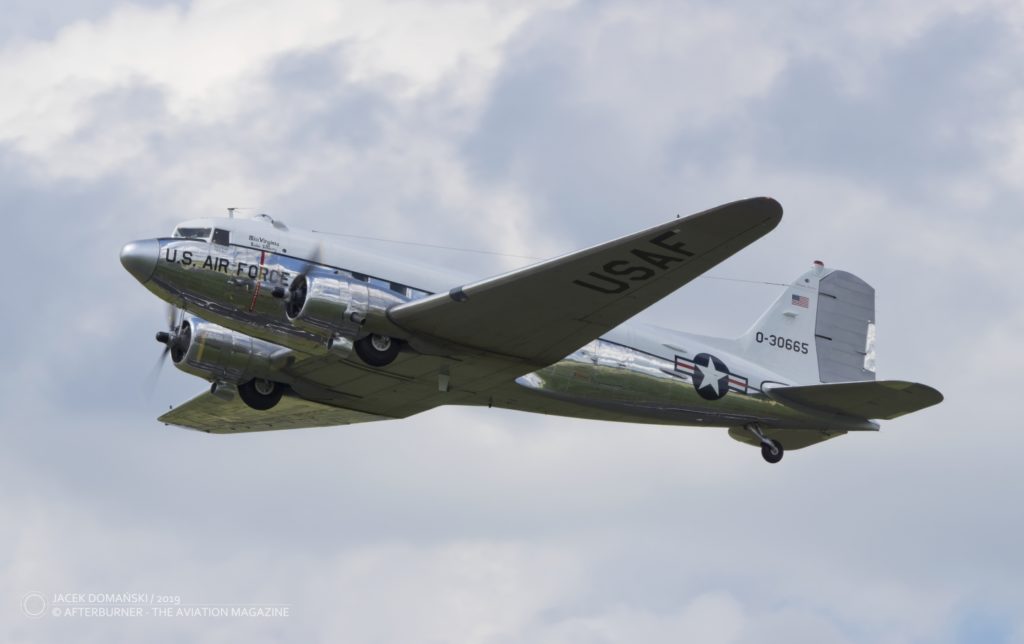
The information about those additional drops shortly reached the airlift commander, Lieutenant General William H. Tunner, who made the airdrop official and named it ´Operation Little Vittles´ (in addition to the ´ Operation Vittles´, the official code-name for the Berlin airlift). The operation was effective from 22nd September 1948 until 13th May 1949. The estimated number of delivered candy was as much as 23 tonnes.
One of the Douglas C-54 Skymaster used in the Operation Vittles is now located at the former Tempelhof airfield, as the airlift memorial. The aircraft is not only carrying the marking used during the operation but also the Rosinenbomber nickname written on its nose. This C-54 was brought to Berlin in 1971, piloted by Colonel Halvorsen.
Gail Seymour ´Hal´ Halvorsen is now 98-year-old. He visited the commemoration event in Wiesbaden, when he had the opportunity to meet again some of the Berlin children, he got to know at the airfield fence, 70 years ago.
More images from the Berlin Airlift commemoration event at Jagel:

